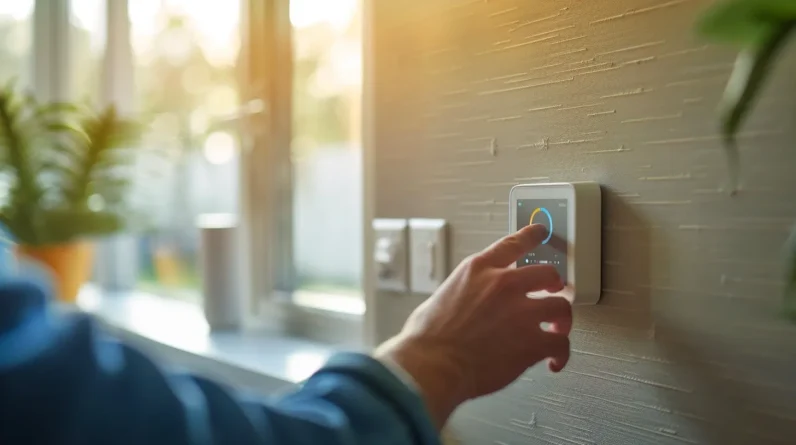
We’re seeing significant impacts on energy efficiency thanks to smart devices. The EME program, launched in 2011, has funded over $350 million in energy efficiency projects, supporting businesses in reducing their carbon footprints. Smart thermostats, lighting systems, and irrigation systems can lead to substantial energy savings – up to 80% in some cases. These devices provide real-time insights, enabling informed decision-making and enhanced energy load profiles. By integrating smart devices, we can lower our energy consumption and environmental footprint. As we explore the world of smart devices, we’re finding even more ways to streamline our energy usage and achieve peak efficiency.
The EME Program Overview
The Efficiency Made Easy (EME) Program is taking a significant step forward in promoting energy efficiency among commercial property owners, and we’re diving into its key features. Launched in 2011, the EME program has funded over $350 million in energy efficiency projects, supporting the modernization and sustainability goals of businesses. We’ve found that the program offers flexible contract terms ranging from 36 to 60 months, facilitating immediate cost savings from reduced energy consumption.
Integrating costs for energy efficiency upgrades into monthly utility bills, businesses can avoid initial investments and benefit from financing upgrades such as LED lighting. This approach enables businesses to reduce their carbon footprint while achieving cost savings through energy conservation measures.
Smart Devices for Efficiency
Smart devices, now widely integrated into various settings, play an essential role in further optimizing the energy-saving efforts that initiatives like the EME Program facilitate. We can leverage smart devices to implement Energy Efficiency Upgrades that considerably reduce our carbon footprint. Smart thermostats, for instance, can adjust heating and cooling based on user habits, leading to energy savings of up to 10-15% on annual energy bills.
Smart lighting systems utilizing LED technology can reduce energy consumption by up to 80% compared to traditional incandescent bulbs. By integrating these devices, we can achieve an improved load profile and promote sustainable living practices. This integration can also provide real-time insights into energy consumption, enabling informed decisions that reduce overall energy usage.
Benefits of Energy Efficiency
Energy efficiency upgrades bring numerous benefits that impact our bottom line, the environment, and our well-being. We can experience immediate cost savings through reduced energy consumption, and many businesses have reported significant financial relief on their monthly utility bills. Upgrading to energy-efficient technologies, such as LED lighting and smart devices, can enhance facility performance and optimize energy load profiles, leading to long-term operational efficiency.
This not only contributes to a more sustainable operational approach but also allows us to effectively meet our carbon reduction goals, reducing our carbon footprint and promoting sustainability. The resulting cost savings can be substantial, making energy efficiency upgrades a smart investment for businesses looking to improve their bottom line while minimizing their environmental impact.
Sustainable Practices for Homes
Implementing sustainable practices in our homes can considerably reduce our environmental footprint and lower household expenses. One of the key ways to achieve this is by adopting smart devices that promote energy efficiency. We can make our homes more sustainable by incorporating the following practices:
1. Reduce energy consumption with smart lighting: Installing LED lighting systems that utilize smart technology can lower energy consumption by up to 75%.
2. Conserve water with smart irrigation systems: Smart irrigation systems adjust to real-time weather conditions, reducing water usage by up to 50%.
3. Upgrade to energy-efficient appliances: Smart refrigerators and other energy-efficient appliances can reduce energy usage by up to 30%, benefitting both the environment and household budgets.
Achieving Optimal Energy Savings
To maximize the benefits of sustainable practices in our homes, we must focus on optimizing our energy savings. Smart devices play an essential role in achieving this goal. By installing smart thermostats, we can reduce our heating and cooling bills by 10-30%. Smart lighting systems, utilizing LED technology, can cut energy consumption by up to 75%. Smart energy meters provide real-time insights into our energy usage, helping us identify areas for improvement and potentially saving us hundreds of dollars annually.
Smart irrigation systems can reduce water usage by up to 50%. By integrating these smart devices, we can reduce our overall energy consumption by 20-30%, resulting in significant cost savings and environmental sustainability.
Conclusion
Embracing the EME program’s innovative approach, we’ve empowered ourselves to effortlessly enhance our energy efficiency. By seamlessly integrating smart devices, we’ve streamlined our sustainable practices, greatly slashing our energy consumption. As a result, we’re not only reducing our environmental footprint but also reaping remarkable rewards, from lower utility bills to a more comfortable living space.
This synergy of smart technology and sustainable habits has simplified our path to ideal energy savings.







